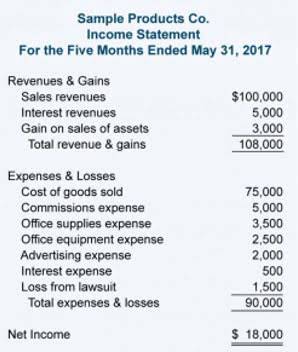
Information on provisioningwill help most if it is related in a systematic and credible way to expected losses – not just those alreadyincurred. Accounting standard setters are working toward agreement on an expected loss impairmentapproach – it is important that they be successful. Financial integrity is “paramount to the success of the 2030 Agenda”, the President of the UN General Assembly said on Thursday, launching a new report that offers a blueprint to address a range of obstacles, particularly surrounding illicit finance flows. The consequences faced by these types of organisations, if discovered, are that investors will likely withdraw from future investments, which will lead to the snowball effect of lost future investments and ultimately ruin the reputation of the company. Whistleblower protections encourage employees to report unethical or illegal activities without fear of retaliation.
US company database remains on hold, despite Supreme Court decision

The demand for transparency in finance has grown exponentially in recent years, driven by increasing public awareness, regulatory scrutiny, and a series of high-profile financial scandals. In an era where corporate fraud, unethical accounting practices, and financial misconduct have eroded public confidence, transparency serves as a crucial safeguard that ensures organizations operate with integrity and accountability. By openly disclosing financial information, companies provide investors, regulators, and the general public with a clear and accurate picture of their financial health, reducing uncertainties and fostering trust. It ensures that stakeholders, including Bookkeeping for Painters investors, regulators, and the public, have access to accurate and timely information about an entity’s financial health and operations. This guide explores the various aspects of financial transparency, including disclosure requirements, compliance measures, and best practices. Ensuring robust internal controls and financial accountability is essential for the effective management of nonprofit organizations.
- The board also plays a critical role in setting the tone for ethical financial practices and ensuring that there are adequate internal controls in place.
- Also, consumption shocks are conveyed as private news; consequently, the market cannot determine whether the asset originator wants to trade based on information or on liquidity needs.
- This all comes down to an organisation’s responsibility, ownership, results, and growth coming together to drive the needle forward.
- Contagion often ran through interbank relationships; banks had concentrated lending in narrow sectors;the originate-to-distribute model depended on liquid markets for potentially risky assets; and maturitymismatches exposed banks to liquidity and rollover risk.
Key Components of Nonprofit Financial Reports

The Securities Act of 1933 mandates that companies disclose essential financial information through the registration of securities. This act aims to ensure that investors receive significant information regarding securities being offered for public sale and to prevent deceit, misrepresentations, and other fraud in the sale of securities. Disclosure requirements are legal obligations that compel entities to provide specific information to stakeholders. These requirements are designed to promote transparency, reduce information asymmetry, and protect investors and the public from fraudulent activities. Transparency is only effective when everyone involved understands the financial information being shared.

FVT/GE Completers List Ad Hoc Report
These documents provide a comprehensive overview of a company’s financial performance and position. Financial transparency means openly sharing financial information and financial transparency practices within an organisation. It involves transparent, honest reporting of economic status, decisions, and operations, helping stakeholders understand the organisation’s economic health and activities. Implementing financial transparency can sometimes encounter resistance or challenges, such as concerns about confidentiality or misinterpretation of data. Address these concerns head-on by clarifying what information will remain confidential and ensuring that shared data is accurate and contextually explained.
Each state has a state charity official who is authorized to investigate financial improprieties in connection with charitable nonprofits. CFA Institute Research and Policy Center is transforming research insights into actions that strengthen markets, advance ethics, and improve investor outcomes for the ultimate benefit of society. The Brookings Institution is a nonprofit organization based in Washington, D.C. Our mission is to conduct in-depth, nonpartisan research to improve policy and governance at local, national, and global levels. As this suggests, ensuring that banks provision appropriately for loan losses is crucial to assessing theirunderlying ability to gross vs net generate earnings on loans and absorb losses in the future.

